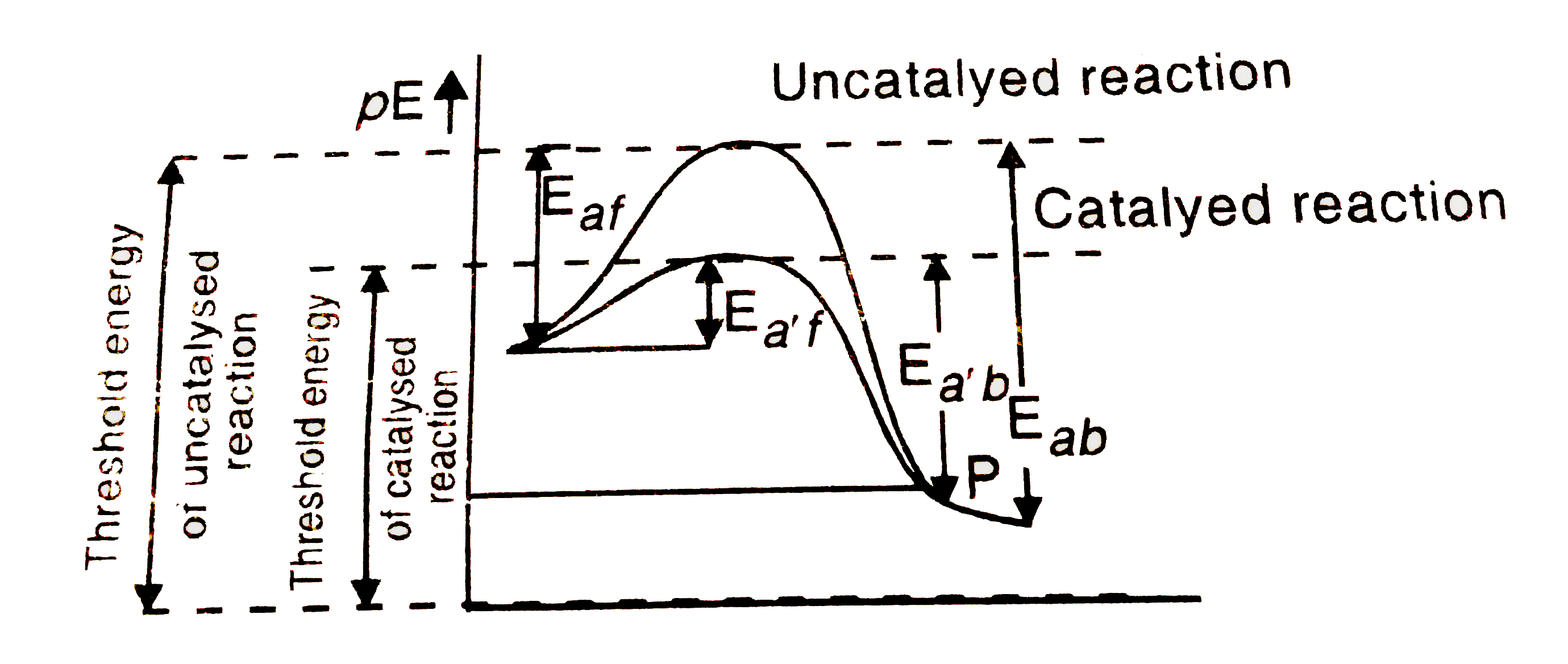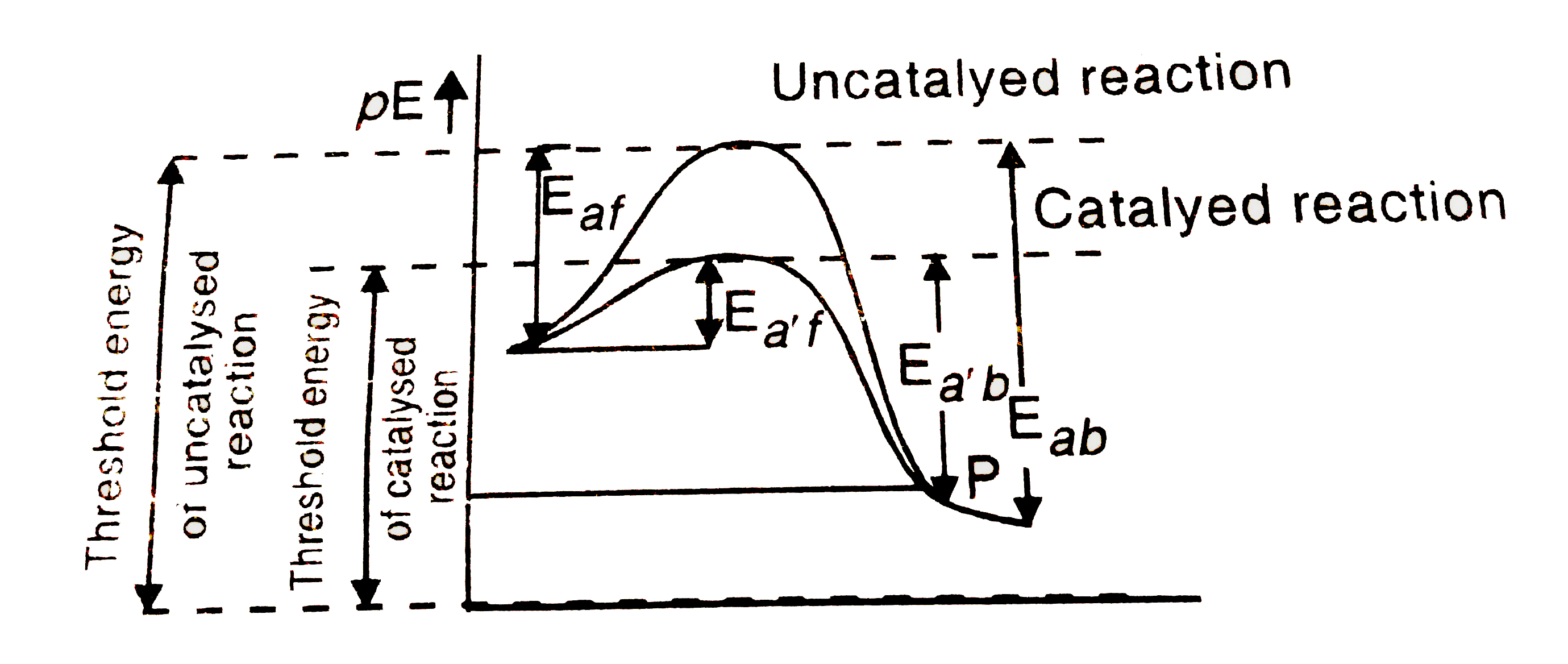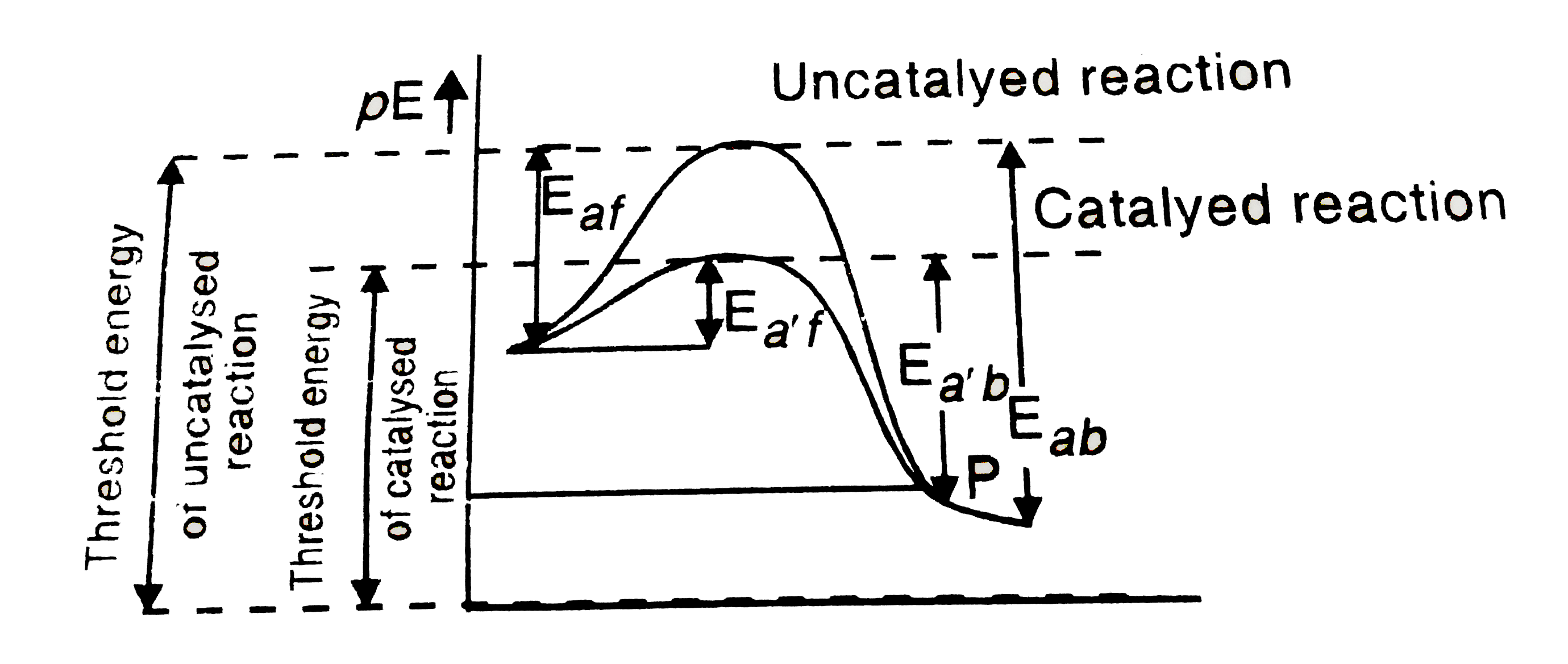The correct statement regarding the functioining of a catalyst is that it :
I→ alters the energy lelvels of the reactants and products
II→ provides an alternae path for climbing the activation energy barrier
III→ makes the reacton thermodynamically feasible
IV→ provides a different mechanism for the reaction
I and II
I and IIII
II and IV
III and IV
The correct Answer is:C
Step by step video, text & image solution for The correct statement regarding the functioining of a catalyst is that it : Irarr alters the energy lelvels of the reactants and products IIrarr provides an alternae path for climbing the activation energy barrier IIIrarr makes the reacton thermodynamically feasible IVrarr provides a different mechanism for the reaction by Chemistry experts to help you in doubts & scoring excellent marks in Class 12 exams.
Updated on:21/07/2023Topper's Solved these Questions
- CHEMICAL KINETICSBOOK - OP TANDONCHAPTER - CHEMICAL KINETICSEXERCISE - OBJECTIVE QUESTIONS (LEVEL-B) SET I
48 Videos
- CHEMICAL KINETICSBOOK - OP TANDONCHAPTER - CHEMICAL KINETICSEXERCISE - OBJECTIVE QUESTIONS (LEVEL-B) SET II
13 Videos
- CHEMICAL KINETICSBOOK - OP TANDONCHAPTER - CHEMICAL KINETICSEXERCISE - PRACTICE PROBLEMS
70 Videos
- CARBOXYLIC ACIDS AND THEIR DERIVATIVESBOOK - OP TANDONCHAPTER - CARBOXYLIC ACIDS AND THEIR DERIVATIVESEXERCISE - Integer
4 Videos
- Chemical Thermodynamics and ThermochemistryBOOK - OP TANDONCHAPTER - Chemical Thermodynamics and ThermochemistryEXERCISE - Self Assessment (Integer type).
3 Videos
Similar Questions
Which of the following factors are responsible for the increase in the rate of a surface catalysed reaction ?
(I) A catalyst provides proper orientation for the reactant molecules
(II) Heat of adsorption of reactants on a catalyst helps reactant molecules to overcome activation energy
(III) The catalyst increases the activation energy of the reaction
(IV) Adsorption increases the local concentration of reactant molecules on the surface of the catalyst.
Select the correct answer using the codes given below:
View SolutionAssertion : A catalyst does no alter the equilibrium constant of a reaction.
Reason : The catalyst forms a complex with the reactant and provides an alternate path with lowe energy of in activation for the reaction. The forward and reverse reaction are affected to the same extent.
View Solution
Knowledge Check
Assertion(A): A catalyst speed up a reaction but does not participate in its mechanism.
Reason(R): A catalyst provides an alternative path of lower activation energy to the reactants.AIf both (A) and (R) are correct, and (R) is the correct explanation of (A)BIf both (A) and (R) are correct, but (R) is the correct explanation of (A).CIf (A) is correct, but (R) is incorrect.DIf (A) is incorrect, but (R) is correct. SAssertion (A) : Catalyst alters the individual energies of the reactants and products
Reason (R) : As such more number of molecules are able to cross the barrier per unit time.
ΔHorΔU of the reaction remains unaltered.ABoth A and R are true and R is the correct explanation of ABBoth A and R are true but R is not a correct explanation of ACA is true but R is falseDA is false but R is trueStatements : A catalyst doesnot alter the equilibrium constant os a reaction .
Expabnations : A catalyst complex with the reactants and provides an alternate path wirh a lower energy of activation for the reacton . The forwaord and forwad and reverse reactions are affected to the same extent .AS is correct but E is wrong .BS is worong but E is correctCBoth S and E are correct and E is correct explanation of (S) .DBoth S and E are correct but E is not correct explanation of S.
Assertion (A) : A catalyst provides an alternative path to the reaction in which conversion of reactants into products takes place quickly
Reason (R) : The catalyst forms an activated complex of lower potential energy with the reactants.
View SolutionWhich of the following factors are responsible for the increase in the rate of a surface catalysed reaction?
(i) A catalyst provides proper orientation for the reactant molecules to react.
(ii) heat of adsorption of reactants on a catalyst helps reactant molecules to overcome activation energy.
(iii) The catalyst increases the activation energy of the reactio.
View SolutionThe energy profile diagrams are very important tool through which, we predict lot of things, like the amount of activation energy of the catalysed and uncatalysed reaction as well as for the backward reaction and forward reaction. Thershold energy of the catalysed and uncatalysed reaction. The graphs representing the energy profile diagram for catalysed and uncatalysed reactions are given below :

The graph of the lower energy barrier is the energy profile diagram for the catalysed reaction adn of the higher barrier is the energy profile diagram of uncatalysed reaction.
From the graph, it is clear that EafandEab are the activation energy of the respectively. EafandEab are the activation energy of the catalysed forward and backward reaction respectvely
The reaction which occurs by absorption of heat is known as endothermic reaction and by release of heat is known as exothermic reaction
For exothermic reaction, ΔH is negative and for endothermic reaction, ΔH is positive
From Arrhenius equation, we know that k=Ae−Ea/RT where k is rate constant which signifies effective number of collisions. A is known as Arrehnius constant, or maximum rate constant of frequency factor which signifies maximum number of collisions with proper orientation of reacting species per mole per second.
The catalysed reaction occurs at 500 K and the uncatalysed reaction occurs at 800 K in such way so that the rate of catalysed reaction and uncatalysed reaction becomes equal as well as the catalyst lower down the energy barrier by 60 J.
Answer the following questions on the basis of above paragraph
From the above information given inthe compreshension, if the normal energy of the reactant is 50 J and that of the product is 20 J. then what will be the activation energy of the uncatalysed backward reaction ?
View SolutionThe energy profile diagrams are very important tool through which, we predict lot of things, like the amount of activation energy of the catalysed and uncatalysed reaction as well as for the backward reaction and forward reaction. Thershold energy of the catalysed and uncatalysed reaction. The graphs representing the energy profile diagram for catalysed and uncatalysed reactions are given below :

The graph of the lower energy barrier is the energy profile diagram for the catalysed reaction adn of the higher barrier is the energy profile diagram of uncatalysed reaction.
From the graph, it is clear that EafandEab are the activation energy of the respectively. EafandEab are the activation energy of the catalysed forward and backward reaction respectvely
The reaction which occurs by absorption of heat is known as endothermic reaction and by release of heat is known as exothermic reaction
For exothermic reaction, ΔH is negative and for endothermic reaction, ΔH is positive
From Arrhenius equation, we know that k=Ae−Ea/RT where k is rate constant which signifies effective number of collisions. A is known as Arrehnius constant, or maximum rate constant of frequency factor which signifies maximum number of collisions with proper orientation of reacting species per mole per second.
The catalysed reaction occurs at 500 K and the uncatalysed reaction occurs at 800 K in such way so that the rate of catalysed reaction and uncatalysed reaction becomes equal as well as the catalyst lower down the energy barrier by 60 J.
Answer the following questions on the basis of above paragraph
Which of the following statement(s) is/are correct about the catalysed and uncatalysed reaction ?
View SolutionThe energy profile diagrams are very important tool through which, we predict lot of things, like the amount of activation energy of the catalysed and uncatalysed reaction as well as for the backward reaction and forward reaction. Thershold energy of the catalysed and uncatalysed reaction. The graphs representing the energy profile diagram for catalysed and uncatalysed reactions are given below :

The graph of the lower energy barrier is the energy profile diagram for the catalysed reaction adn of the higher barrier is the energy profile diagram of uncatalysed reaction.
From the graph, it is clear that EafandEab are the activation energy of the respectively. EafandEab are the activation energy of the catalysed forward and backward reaction respectvely
The reaction which occurs by absorption of heat is known as endothermic reaction and by release of heat is known as exothermic reaction
For exothermic reaction, ΔH is negative and for endothermic reaction, ΔH is positive
From Arrhenius equation, we know that k=Ae−Ea/RT where k is rate constant which signifies effective number of collisions. A is known as Arrehnius constant, or maximum rate constant of frequency factor which signifies maximum number of collisions with proper orientation of reacting species per mole per second.
The catalysed reaction occurs at 500 K and the uncatalysed reaction occurs at 800 K in such way so that the rate of catalysed reaction and uncatalysed reaction becomes equal as well as the catalyst lower down the energy barrier by 60 J.
Answer the following questions on the basis of above paragraph
Which of the following statement(s) is/are correct for the catalysed and uncatalysed reactions ?
View Solution